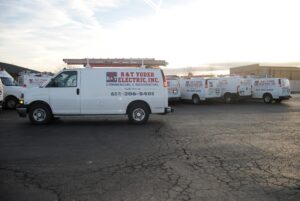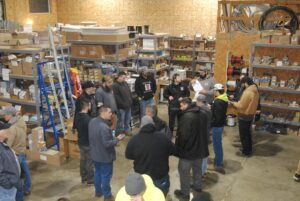
A spa isn’t just a luxury—it’s a retreat from the daily grind. It’s where warm water, powerful jets, and ambient lighting merge to create moments of tranquility. But behind this oasis lies a complex electrical system that powers every soothing bubble and warming sensation. When that system falters, the serene experience quickly turns into frustration.
Spa electrical issues are more than inconvenient; they can pose serious safety hazards. Water and electricity make a dangerous pair if not managed correctly. Regular inspections, timely repairs, and understanding common issues can extend your spa’s lifespan, ensuring countless stress-relieving soaks for years to come.
Why Spa Electrical Repairs Should Never Be Delayed
The spa’s electrical system powers essential components like heaters, pumps, filtration systems, and lighting. When these components malfunction, it impacts the overall experience and may jeopardize safety.
Key Reasons to Address Electrical Issues Immediately
- Safety First
Faulty wiring can lead to electric shocks, fires, or damaged equipment. - Performance Optimization
Inefficient electrical components force other systems to work harder, reducing effectiveness. - Cost Efficiency
Minor repairs are more affordable than major component replacements. - Extended Lifespan
Proactive maintenance prevents wear and tear on critical parts. - Compliance with Electrical Codes
The National Electrical Code (NEC) mandates specific safety measures for spa installations.
Fact
Spas without proper GFCI protection are 30% more likely to experience electrical issues leading to injury.
Common Spa Electrical Problems and Their Solutions
Spas rely on multiple interconnected electrical components. When one part fails, the entire system often follows. Recognizing the symptoms early can prevent larger problems down the line.
1. Malfunctioning Spa Heater
Symptoms
- Water remains cold despite heating settings.
- Error codes on the control panel.
- Fluctuating water temperatures.
Causes
- Burned-out heating elements.
- Faulty thermostats.
- Corroded wiring.
Repair Solutions
- Test and replace damaged heating elements.
- Recalibrate or replace thermostats.
- Clean and secure wiring connections.
Pro Tip
Regularly monitor calcium levels; scale buildup is a common culprit behind heater failure.
2. Water Pump Motor Issues
Symptoms
- Jets lose pressure or stop working entirely.
- Unusual noises such as grinding or humming.
Causes
- Worn motor bearings.
- Blocked impeller.
- Electrical supply issues.
Repair Solutions
- Lubricate or replace bearings.
- Clear debris from the impeller.
- Check and repair wiring faults.
Insight
Running the pump without water can cause irreparable damage within minutes.
3. Spa Lighting Malfunctions
Symptoms
- Lights flicker or fail to turn on.
- Discolored or water-filled light fixtures.
Causes
- Burned-out bulbs.
- Moisture intrusion into electrical housing.
- Corroded wiring.
Repair Solutions
- Replace with waterproof, energy-efficient LED bulbs.
- Reseal lighting fixtures.
- Clean and replace corroded wires.
Safety Tip
Ensure spa lights are connected to GFCI-protected circuits to prevent shocks.
4. Control Panel Failures
Symptoms
- Buttons become unresponsive.
- Inaccurate temperature or timer readings.
Causes
- Software glitches.
- Wiring disconnections.
- Water damage.
Repair Solutions
- Reset or update the control panel software.
- Inspect wiring connections.
- Replace water-damaged components.
Fact
Control panels with Wi-Fi connectivity require firmware updates to maintain compatibility with smart home systems.
5. GFCI Breaker Trips Frequently
Symptoms
- Power cuts off during operation.
- GFCI reset button won’t stay engaged.
Causes
- Moisture in electrical components.
- Damaged wiring.
- Overloaded circuits.
Repair Solutions
- Dry and seal moisture-prone areas.
- Replace frayed wires.
- Rebalance the electrical load if necessary.
Warning
Never bypass a tripping GFCI; it signals a potentially dangerous ground fault.
The Spa Electrical Repair Process Explained
Understanding how professionals approach electrical repairs can ease concerns about safety and efficiency. Here’s a step-by-step look at the process
1. Power Disconnection and Safety Inspection
- Shut off power at the main breaker.
- Use multimeters to verify zero current flow.
2. Component Assessment
- Inspect wiring, connections, and hardware for damage.
- Examine control panels for moisture or corrosion.
3. Diagnostics and Troubleshooting
- Run tests on pumps, heaters, and lighting systems.
- Identify error codes on digital panels.
4. Repairs and Component Replacement
- Replace damaged parts with manufacturer-approved components.
- Rewire or reinforce connections as needed.
5. Final Testing and Safety Verification
- Restore power and test the system under normal operating conditions.
- Confirm GFCI and emergency shutoff functionality.
Tip
Schedule a professional electrical inspection annually to catch minor issues early.
The Science Behind GFCI Protection in Spas
Ground-Fault Circuit Interrupters (GFCIs) are crucial for spa safety, automatically cutting power if they detect current flowing through unintended paths, like water.
How GFCI Devices Work
- Monitor current flow between hot and neutral wires.
- Detect differences as small as 5 milliamps.
- Cut power in milliseconds when anomalies occur.
Did You Know?
The NEC mandates GFCI protection for all spa-related outlets, lights, and pumps.
Preventative Maintenance Tips for Spa Electrical Systems
Proactive maintenance reduces the frequency of repairs and extends the lifespan of spa components.
Essential Maintenance Steps
- Monthly Checks
- Test GFCI outlets.
- Inspect pump operation and listen for unusual noises.
- Quarterly Tasks
- Clean control panel surfaces to prevent moisture infiltration.
- Verify lighting functionality.
- Annual Inspections
- Schedule professional electrical assessments.
- Replace worn seals and insulation.
Tip
Use a spa cover when the spa is not in use to minimize exposure to moisture and debris.
Spa Electrical Components: Understanding Their Roles
The spa’s electrical system comprises various components working in tandem. Knowing their functions can help homeowners communicate more effectively with electricians when issues arise.
1. Heater
- Maintains desired water temperature.
- Sensitive to calcium buildup and power surges.
2. Pump and Motor
- Circulates water through jets and filters.
- Vulnerable to blockages and electrical malfunctions.
3. Control Panel
- Adjusts temperature, jets, and lighting.
- Susceptible to software bugs and water damage.
4. Lighting System
- Illuminates the spa for ambiance and safety.
- Requires moisture-resistant housings and wiring.
5. GFCI Breaker
- Provides shock protection.
- Must be tested monthly for reliability.
The Dangers of DIY Spa Electrical Repairs
While YouTube tutorials make electrical work seem straightforward, spa repairs are inherently risky.
Key Risks of DIY Electrical Repairs
- Electrocution Water’s conductivity amplifies electrical shock risks.
- Fire Hazards Improper wiring connections can cause sparks and overheating.
- System Damage Incorrect repairs may damage components, leading to costly replacements.
- Code Violations Non-compliant installations may void insurance coverage.
Fact
The CPSC reports that improper spa wiring is a leading cause of water-related electrical incidents.
How Spa Electrical Repairs Improve Energy Efficiency
Electrical inefficiencies increase energy consumption and operating costs. Repairs and upgrades help maintain optimal performance.
Energy-Saving Benefits:
- Reduced Heat Loss Repaired heaters warm water more efficiently.
- Lower Pump Strain Well-maintained pumps circulate water with less resistance.
- Efficient Lighting Upgrading to LED spa lights cuts energy usage by up to 80%.
How to Choose a Reliable Spa Electrical Repair Service
Not all electricians are qualified for spa repairs. Here’s what to look for:
- Specialized Experience
Experience with spa systems ensures efficient diagnosis and repairs. - Licensing and Insurance
Protects against liability for faulty work or damages. - Up-to-Date Knowledge
Familiarity with current NEC standards ensures compliance. - Transparent Pricing
Avoid vague estimates; request detailed quotes before work begins.
Tip
Ask for references from previous spa repair clients.
FAQ
1. Why does my spa GFCI keep tripping?
Moisture infiltration, damaged wiring, or ground faults are common causes. Professional inspection is recommended.
2. How often should spa electrical components be inspected?
Annually, with additional checks if performance issues arise.
3. Can I replace a spa heater element myself?
While possible, professional installation ensures proper calibration and safety compliance.
4. Why are my spa lights flickering?
Corroded wiring, water intrusion, or failing LED drivers often cause flickering.
5. Is GFCI protection necessary for indoor spas?
Yes. NEC regulations require GFCI outlets for all spa installations.
Your spa should be a haven of relaxation, not a source of electrical worry. Malfunctions can disrupt your peace, damage equipment, or create safety hazards.
Our expert electricians provide swift, reliable spa electrical repair services. From diagnosing complex wiring issues to replacing worn-out heaters and pumps, we ensure every component works flawlessly.







